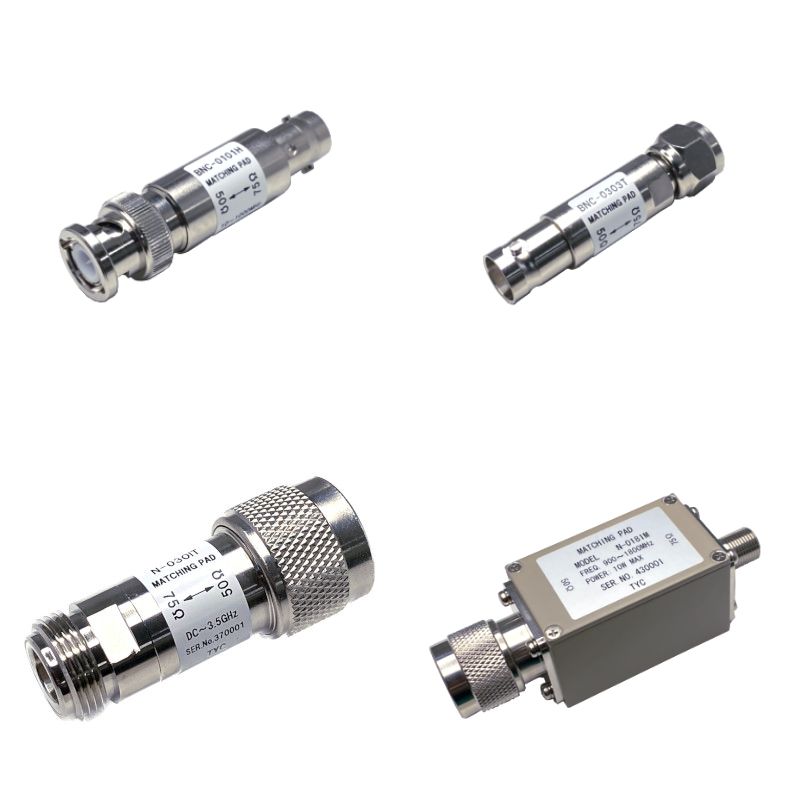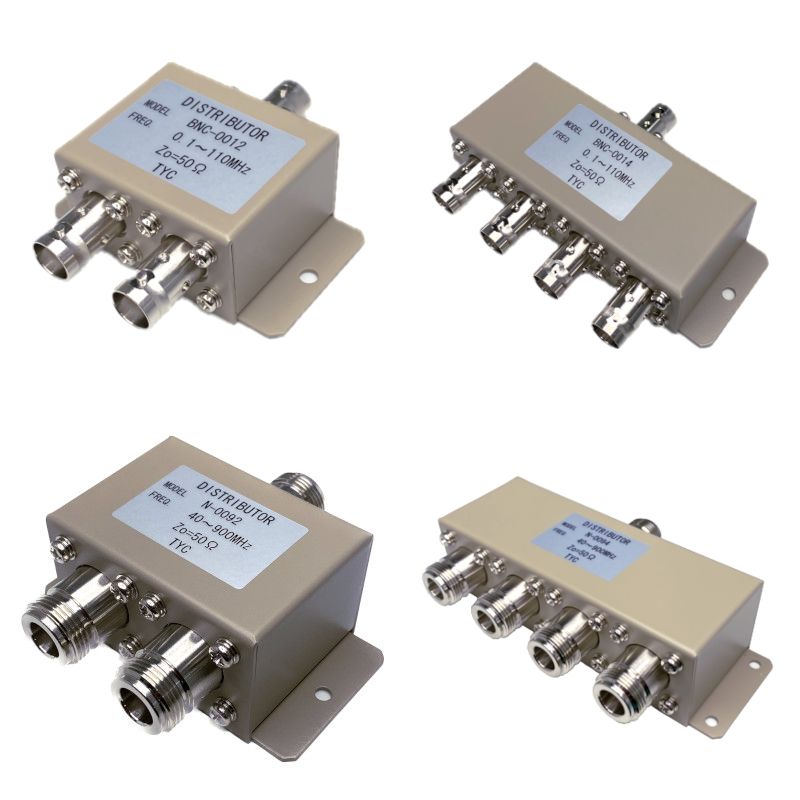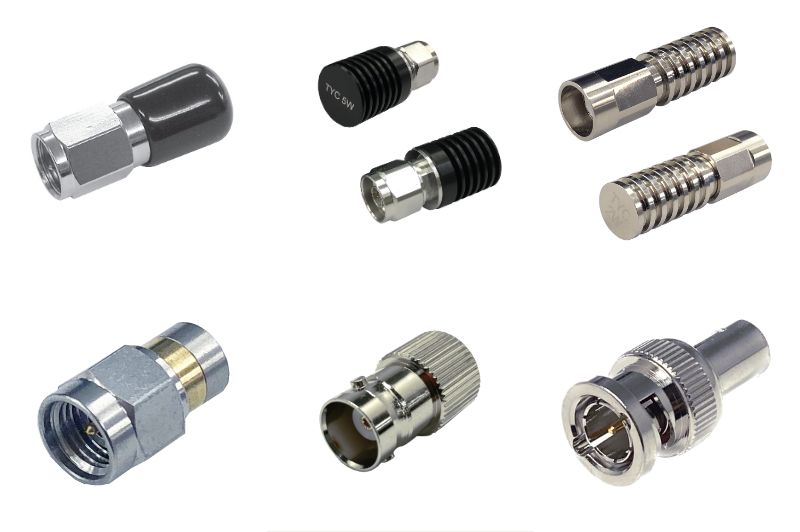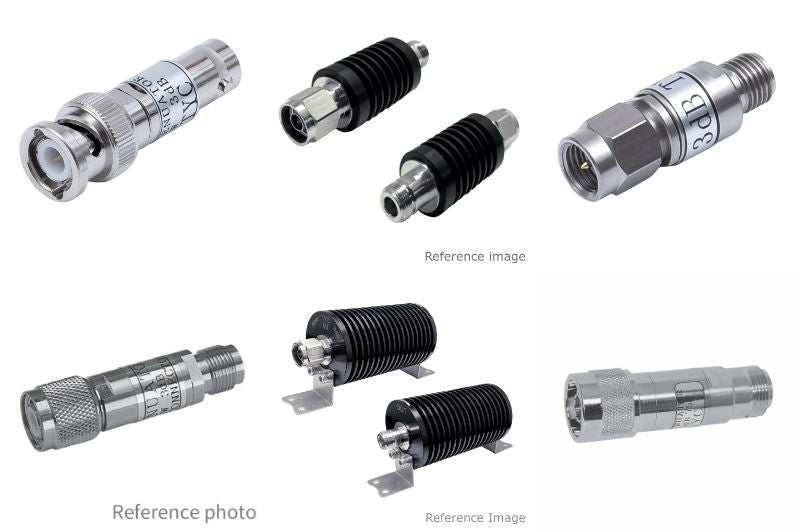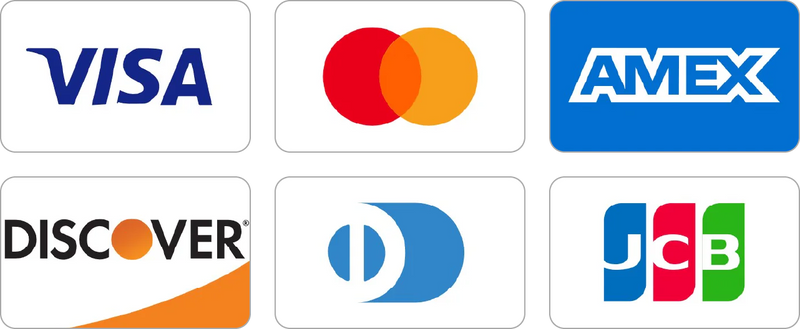Coax Components Guide
What are Coax Components?
Components using coaxial connectors.
We offer a lineup of Impedance Converters, Coaxial Distributors, Coaxial Terminators, and Coaxial Fixed Attenuators, as well as Sheet metal fabrication with coaxial connectors on a made-to-order basis.
Coaxial Impedance Converters
BNC and N type Coaxial Impedance Converters.
Impedance Converters have the ability to perform impedance matching between different characteristic impedances.
Normally, impedance is converted from 50Ω to 75Ω or 75Ω to 50Ω.
There are three types of impedance conversion methods: conversion transformer, resistance, and transmission circuit, and they are used differently depending on the application and frequency bandwidth.
Coaxial Distributors
BNC and N type Coaxial Distributors.
Coaxial distributors (synthesizers) are capable of efficiently distributing (synthesizing) high-frequency signals.
The optimum distributor (synthesizer) can be selected according to the frequency band used, connector, characteristic impedance, and number of distributions.
Coaxial Terminators
Sheet metal fabricated products with coaxial connectors
Sheet metal fabricated products with coaxial connectors are also available.
Although it is a custom-ordered product, we will process the sheet metal with the connector and pitch (spacing) specified.
Please consult with us about printing seals on the specified locations.
We are also developing mounting fittings for the back side of the connectors, which are convenient for connector mounting.
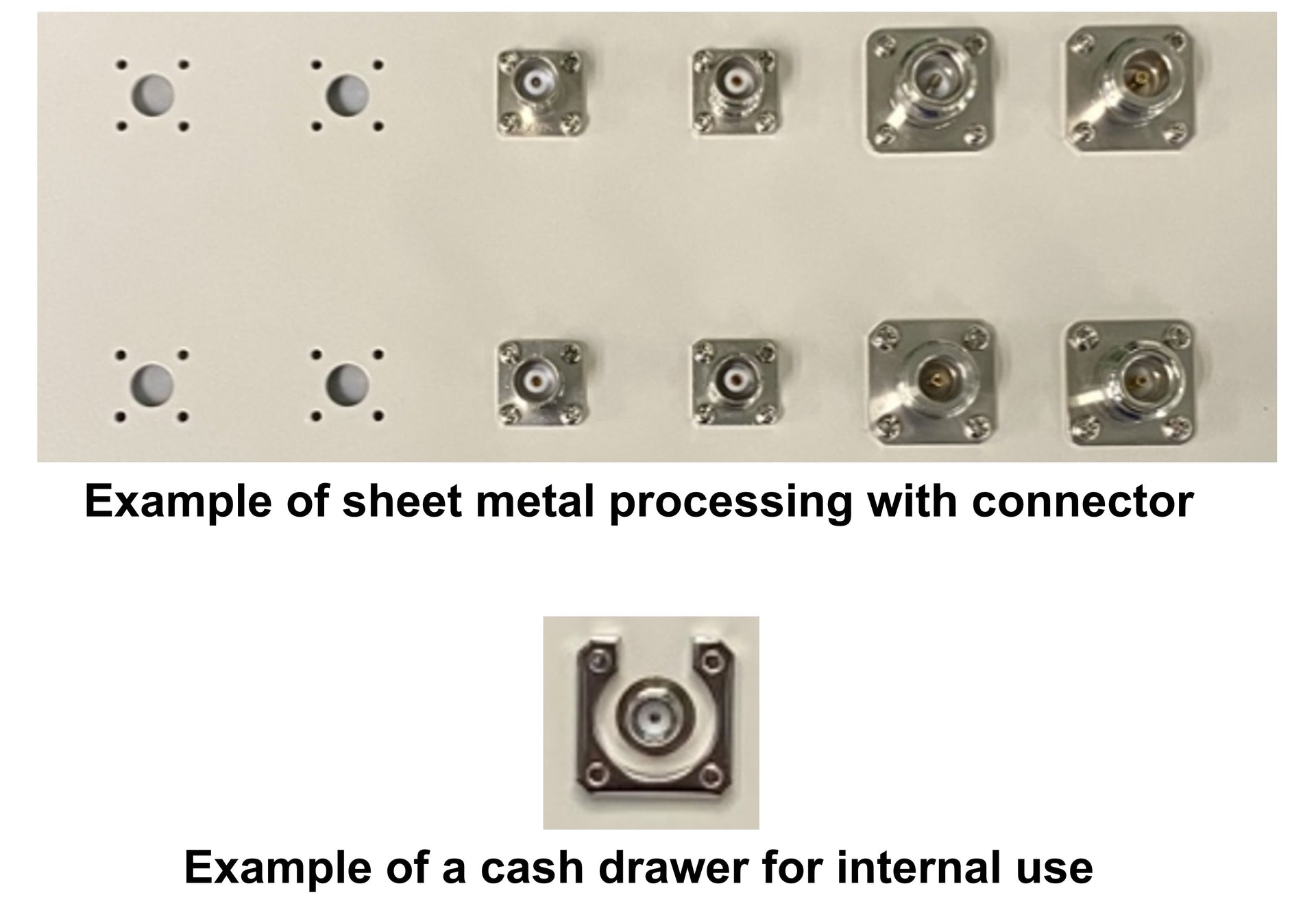
Purchase Guide
Tyclon coaxial connectors and processed coaxial cable products can be purchased directly online using a variety of credit cards.

